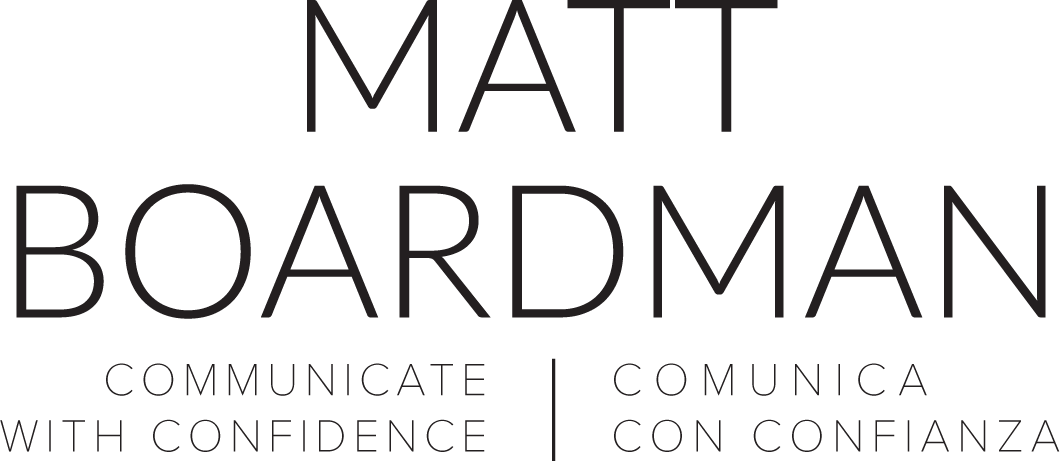Have you ever found yourself saying that you didn’t get on with a person, but struggled to work out exactly why? Unless that person had repugnant views about a recent world atrocity, I suggest it was probably because they didn’t smile very much.
I've recently realised just how far a simple smile can go. I moved to Madrid three weeks ago after two and a half years as a management consultant in London. My Spanish is good but, contrary to conventional wisdom, my ability to speak it is significantly better than my ability to understand others (friends unkindly suggest that I also have this problem in English). Moving to another country without any personal connections and with only the names and phone numbers of a few friends-of-friends, my greatest chance of avoiding social exile has been to connect with new people quickly: otherwise known as building rapport.
Usually, the best way to build rapport in a conversation is to show you are enjoying the other person’s company. This in turn allows them to relax and enjoy yours, liking you more in the process.
Lost in translation
Building rapport with a stranger can be difficult. This is mainly because we don’t usually communicate as well as we think we do, often leaving a large margin of ambiguity for the other person to interpret our words and actions, potentially negatively.
We humans tend to believe two things:
- That we are accurate judges of other people’s feelings
- That others are accurate interpreters of our feelings
Dr. Steve Peters (The Chimp Paradox) argues that neither of these is true. In fact, we are almost universally terrible at judging other people’s feelings, particularly when it’s the first time we’ve met them. Take a second to think of a time you’ve initially disliked someone and later completely changed your mind. I don’t know about you, but I’ve heard countless times (even in the adult world) “We’re best friends now, but initially we didn’t like each other”. That’s usually not because either person underwent a partial lobotomy, but simply because they misread each other in their first encounter. At some point after their first ill-fated conversation they likely had a second one in which they interpreted each other more positively, which left them feeling good about each other.
All this begs the question: how can you reduce the margin of ambiguity in a conversation and make it clear to the other person that you are enjoying their company, therefore increasing the chance they enjoy yours?
Reducing ambiguity
The tools we have for communicating our feelings fall broadly into two categories:
- Verbal language (what you say)
- Body language (what you do)
You’ll probably have heard before, possibly to the point of tooth-dissolving boredom, that body language sends stronger signals than verbal language. Nowhere is this more extreme than when you don’t share a fluent language with the other person, as I have found in Madrid.
Body language can include many things like hand gestures, posture and how truthful your hips are, but in the specific context of a one-to-one conversation the most important thing is your smile.
Max Eastman called smiling the “universal welcome”. In almost every culture (I write ‘almost’ as a pre-emptive defence against any anthropologists who can prove me wrong with case studies from East Timor), a genuine smile is a clear and unambiguous way to communicate enjoyment.
If I’m right that the quickest way to enjoy a conversation is when you know the other person is enjoying it, and that a smile is the surest sign of enjoyment, then your best chance at building rapport quickly is to smile.
Smiling: reducing ambiguity since 2300BC
How to smile
It is almost impossible to fake a smile. When a corporate photographer at my previous job pointed a DSLR at me at 11am on a busy London street and said “Okay... Now... smile! No, actually smile!”, I spent the next few minutes weighing up the possibility of keeping my job if I blamed his accidental death on a passer-by.
The best thing to do, in my experience, is not to try. Just do one of two things:
- Assume rapport. Tell yourself you already like them. It is much easier to smile if you like someone, and are relaxed around them.
- Laugh. Not a huge belly laugh (unless warranted), but even a slight laugh, which is actually quite easy to trigger if you just imagine that what they say next is going to be funny. When you find something funny it is hundreds of times easier to smile naturally. Do remember to be contextually appropriate and hold the rippling laugh when they are talking about a recent bereavement.
In conclusion:
- The clearer you can make it that you are enjoying the other person’s company (by reducing the margin of ambiguity between you), the more likely they are to enjoy your company in return.
- The clearest way of communicating your enjoyment is to smile.
- If the other person isn’t smiling, remind yourself that this probably doesn’t mean anything other than that they aren’t concentrating on their body language. Repeat steps 1 and 2.
When you next meet a stranger, you can increase your immediate rapport with them by making it as clear as possible that you’re enjoying talking to them. Imagine that you don’t speak the same language and focus on giving clear signals with your body instead. I don’t suggest stammering and gesturing theatrically, but that you actively focus on smiling.

